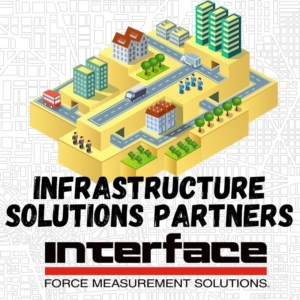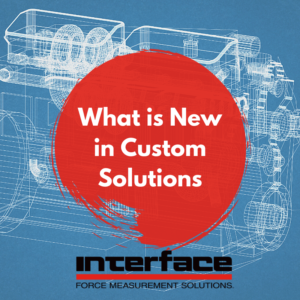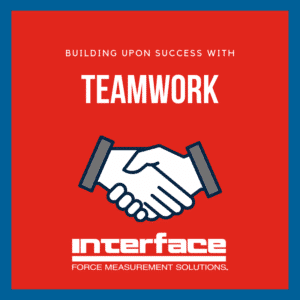What are IO-Link Load Cells

Interface continues to see a growing demand for using different communication protocols within our force measurement sensors and instrumentation devices. One of these protocols is IO-Link, which is a standardized communication protocol that enables bidirectional communication between the control system and the connected devices. It is frequently used in the field of industrial automation and IoT.
IO-Link is designed to connect and communicate between sensors, actuators, and other industrial devices with a higher-level control system. It runs over a standard three-wire connection, typically using unshielded industrial cables, and supports point-to-point communication.
Industrial automation and IoT are fundamentally reliant on digital transformation. Industry 4.0 requires the exchange and communication of information between sensor and instrumentation. IO-Link supports this requirement, helping to keep machines and facilities using sensors under control while improving their efficiency and productivity.
IO-Link can be used with load cells in industrial applications to enable enhanced monitoring, control, and diagnostics. Interface now offers customization of our most popular load cells with IO-Link capabilities.
Why Use IO-Link in Test & Measurement
- IO-Link is compatible with a wide range of sensors, actuators, and other devices. It provides a standardized interface, allowing easy integration and interchangeability of devices within an automation system.
- Real-time monitoring, control, and diagnostics is especially important in test and measurement. IO-Link enables this type of data exchange between devices and the control systems supporting the transmission of measurement data.
- IO-Link supports both analog and digital devices, making it versatile for a range of applications.
- With IO-Link, devices can be connected using a single cable, reducing the complexity and cost of wiring and simplifying installation and maintenance.
- Health and maintenance are important in testing. IO-Link supplies advanced diagnostic capabilities, allowing devices to report their status, health, and detailed diagnostic information. This is valuable for maintenance, troubleshooting, and reducing downtime.
 Interface 1200 and 1201 Load Cell IO-Link Features and Benefits
Interface 1200 and 1201 Load Cell IO-Link Features and Benefits
The 1200 and 1201 Series IO-Link Load Cell Universal or Compression-Only are LowProfile load cells that are IO-Link compatible.
- Proprietary Interface temperature
- Compensated strain gages
- Eccentric load compensated
- Low deflection
- Shunt calibration
- Tension and compression
- Compact size
- 3-wire internal amp choice of 4-20 mA, ±5V, ±10V, 0-5V, 0-10V
- Options include Base (recommended), custom calibration, multiple bridge, special threads and dual diaphragm
- Accessories include mating connector, mating cable, instrumentation and loading hardware
For a complete datasheet of this product, go to the 1200 and 1201 with IO-Link product page.
IO-Link integration with load cells enhances the functionality and flexibility of weight measurement systems by enabling seamless communication, remote evaluations and diagnostic capabilities. It contributes to more efficient and reliable industrial processes where precise monitoring is necessary.
Weight and force monitoring: By connecting load cells to an IO-Link-enabled system, such as a PLC or a weighing controller, real-time weight data can be transmitted and monitored. The load cells measure the weight or force applied to them, and this information can be instantly communicated to the control system via IO-Link. The control system can then perform tasks such as weight-based control, process optimization, or triggering specific actions based on weight thresholds.
Remote parameterization and calibration: IO-Link allows load cells to be remotely parameterized and calibrated from the control system. Instead of manually adjusting the load cell settings at the device level, the control system can send the necessary configuration commands through the IO-Link interface. This feature simplifies the setup process, saves time, and reduces the risk of errors during calibration.
Performance evaluation and detection: IO-Link provides diagnostic capabilities for load cells, enabling the detection of potential issues or abnormalities. The load cells can send diagnostic information, such as temperature, supply voltage, or fault codes, to the control system through IO-Link. This data can be utilized for predictive maintenance, troubleshooting, or alarming in case of malfunctions.
IO-Link enhances the functionality, flexibility, and efficiency of industrial automation systems by enabling intelligent communication between devices and the control system.
ADDITIONAL RESOURCES
Interface New Product Releases Summer 2023
Force Sensors Advance Industrial Automation
Interface Weighing Solutions and Complete Systems
Instrumentation Analog Versus Digital Outputs


 At Interface, teamwork is a critical element to our success—and no one understands collaboration better than our team. We recently delivered a highly-critical assignment for the oil and gas industry. Robert Fuge, a design engineer at Interface, and his team of experts were tasked with delivering an emergency order that required the typical lead time for a new design to be cut by 30 percent.
At Interface, teamwork is a critical element to our success—and no one understands collaboration better than our team. We recently delivered a highly-critical assignment for the oil and gas industry. Robert Fuge, a design engineer at Interface, and his team of experts were tasked with delivering an emergency order that required the typical lead time for a new design to be cut by 30 percent.
